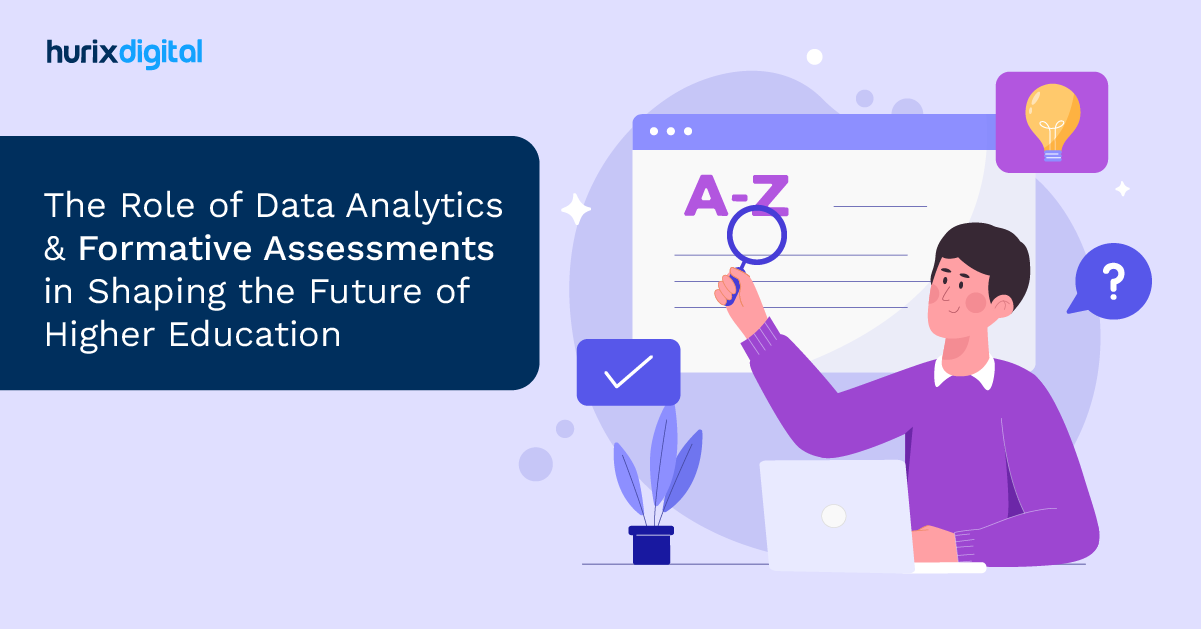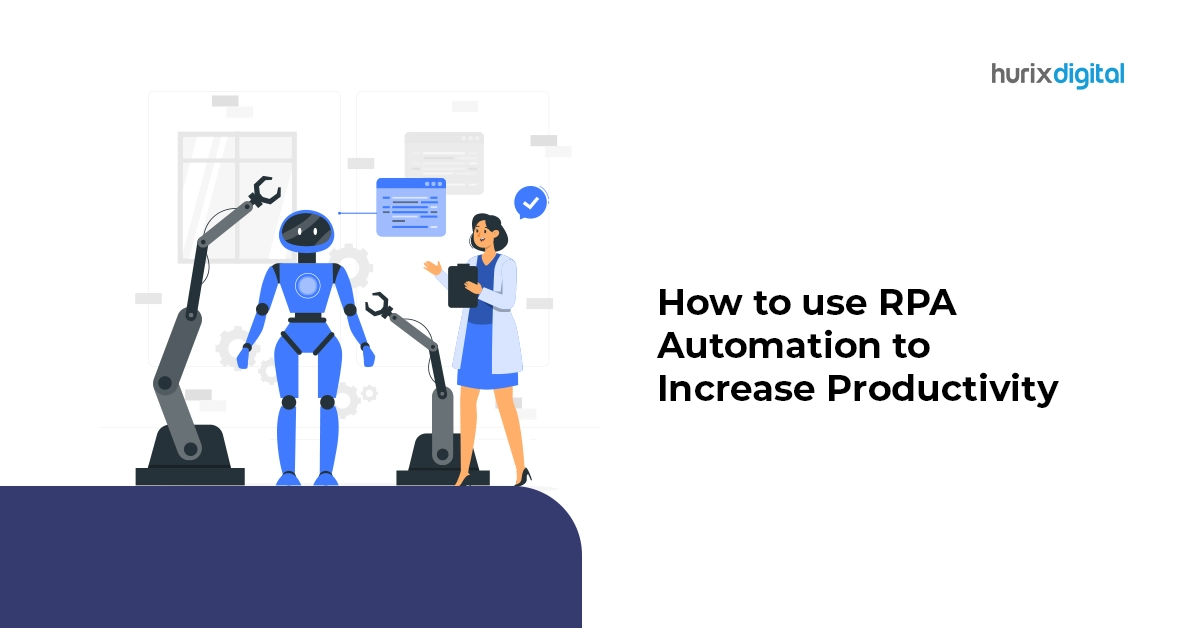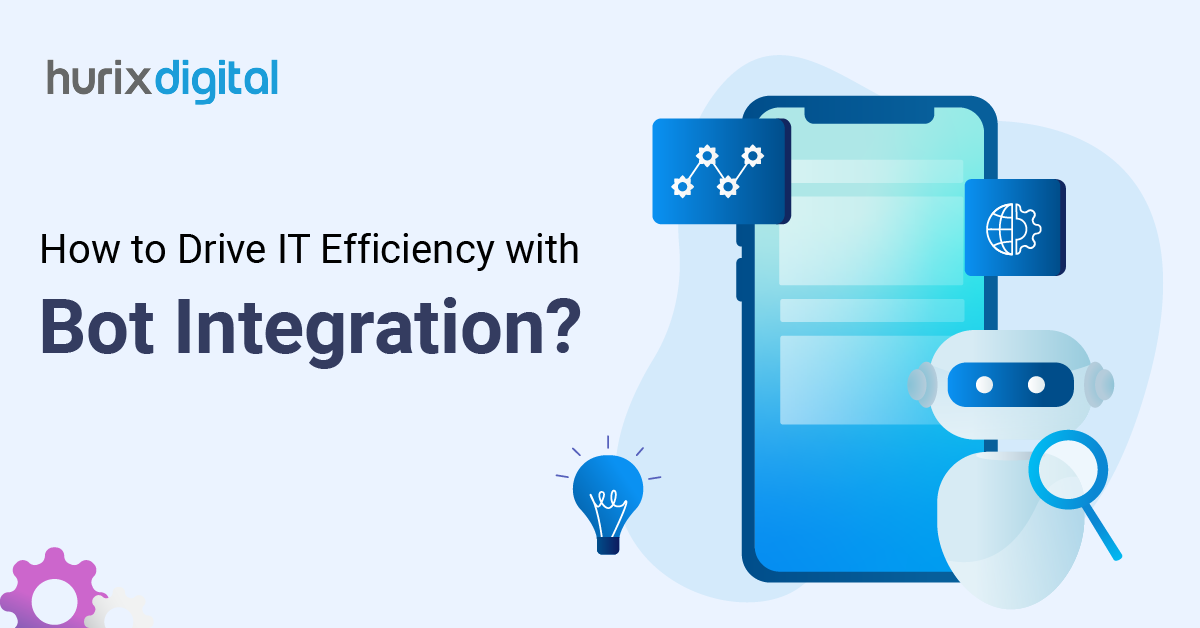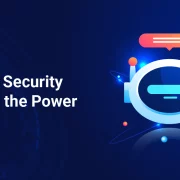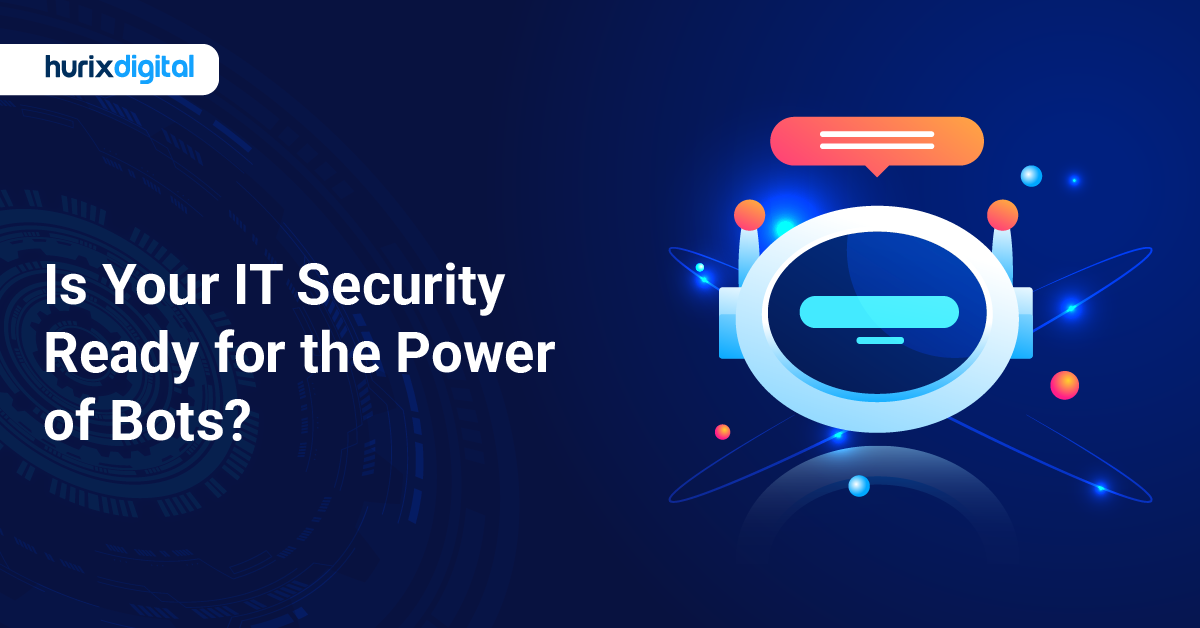
Is Your IT Security Ready for the Power of Bots?
Summary
Bots transform IT operations, from automating tasks to enhancing security frameworks. This guide explores how integrating bots can boost IT efficiency, reduce workload, and protect systems from threats. Learn why IT leaders prioritize bot integration for smarter, faster, and more secure digital infrastructure.
The IT services industry has grown by almost 52% since 2020 and is currently valued at $1,420 billion as of 2024. While this signifies tremendous growth, it also indicates a rising pressure for IT departments to deliver more with less.
The roadmap to meeting expectations and supporting business growth comes with several hurdles. Manual tasks, repetitive processes, and numerous support tickets can greatly hinder productivity when managed inefficiently. Amidst this high-pressure environment, bot integration powered by conversational AI offers a revolutionary solution.
With the power to drive IT efficiency with intelligent support and RPA automation, businesses need to know how to maximize bot integration to have a competitive edge. This guide explores its importance and key practices to incorporate for maximum efficiency and productivity.
Table of Contents:
- What is Conversational AI and Bot Integration?
- How Bot Integration Streamlines IT Operations
- Understanding the Challenges of IT Efficiency
- 5 Key Practices to Incorporate Bot Integration Effectively
- Secure Bot Solutions for Businesses
- Best Practices for Secure Chatbot Integration
- Implement Chatbot Encryption
- Use a Role-Based Access Control System
- Conduct Security Audits
- Standardized Chatbot Testing
- Secure Chatbot Integration with Existing Security Infrastructure
- Secure Chatbot Integration and Effective Functionality
- Training and Education
- Smartly Give Human Options
- Measure Chatbot Effectiveness
- IT Security and Chatbots for Businesses and Customers
- Building IT Excellence with Bot Integration
What is Conversational AI and Bot Integration?
Conversational AI is a branch of AI that empowers computers to understand, process, and generate human language.
This technology enables machines to engage in meaningful conversations through text or voice. Conversational AI effectively drives tools such as virtual assistants, allowing them to interpret user queries, provide relevant information, and complete tasks.
One application of conversational AI that has transformed every industry is bot integration. This futuristic application involves seamlessly incorporating conversational AI-powered bots into existing IT systems and processes. Bot integration focuses on handling routine tasks and providing support to enhance the overall efficiency of IT interactions between humans and machines.
With this quick overview, let’s dive into how bot integration enhances your business’s IT operations.

How Bot Integration Streamlines IT Operations?
To effectively overcome the several challenges in the industry and efficiently achieve IT excellence, here’s how bot integration helps streamline IT workflows and operations:
1. Automates Routine Tasks
Bots can efficiently handle a wide range of repetitive tasks, from password resets and IT asset management to service desk ticket routing. This workflow automation frees IT staff to focus on higher-value activities requiring human expertise and creativity.
2. Provides Self-Service Support
Algorithms and machine languages drive conversational AI-powered bots. This allows businesses to offer 24/7 availability and immediate responses. Bots also empower end-users to resolve common issues independently, reducing the burden on IT support teams and improving overall user satisfaction.
3. Improves Data Management
AI can organize and manage essential knowledge bases. Bots with the right data sources efficiently provide access to relevant information, troubleshooting guidance, and even summarize critical issues. This promotes user self-sufficiency and streamlines knowledge sharing within the IT department.
When your bot integration delivers human-like services at higher efficiencies, your business can focus better on strategy, revenue, and bottleneck management instead of ground-level tasks.
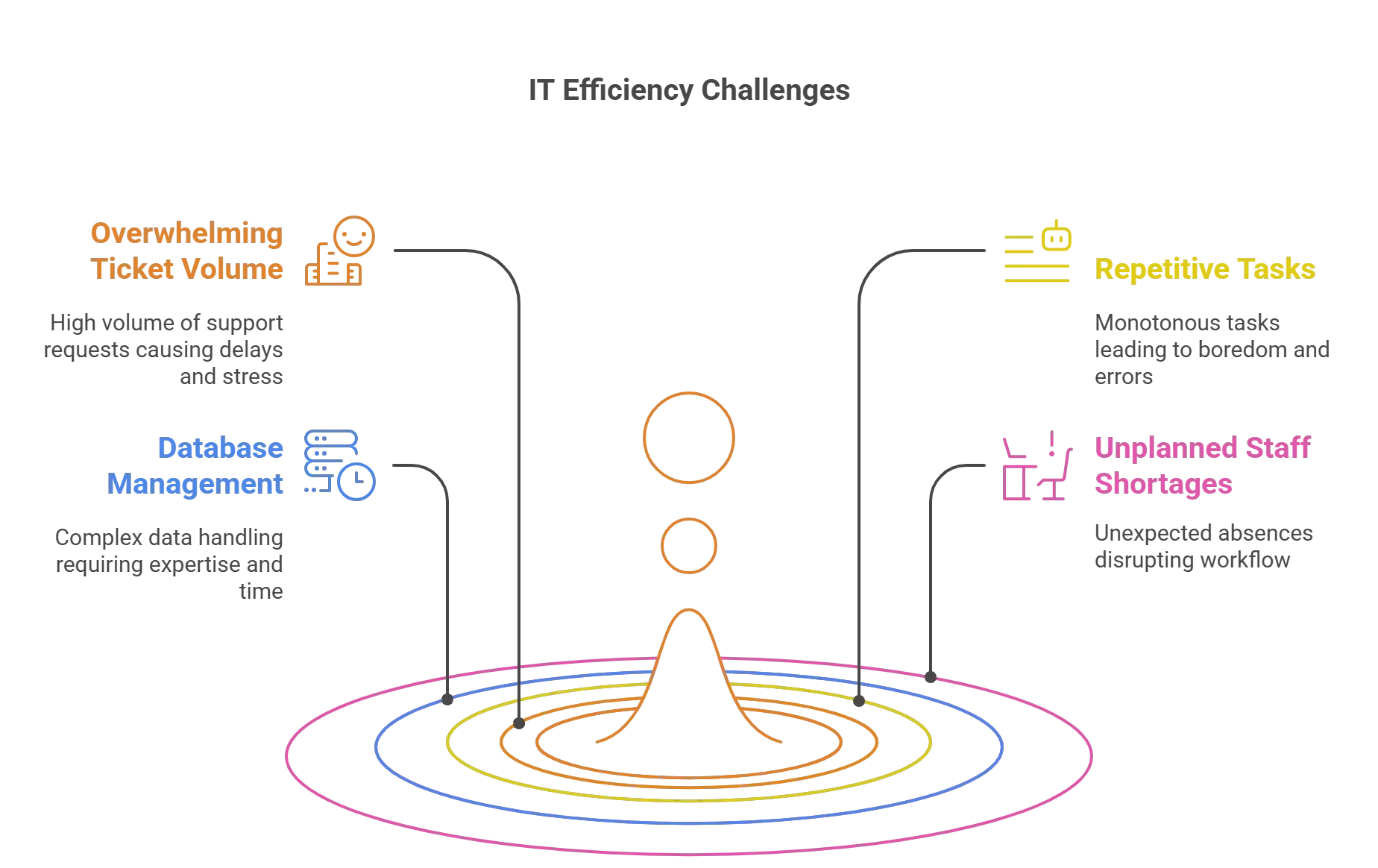
Understanding the Challenges of IT Efficiency
Before diving into improving IT efficiency with bot integration, let’s understand the challenges businesses face that make it so crucial.
As businesses rely more on technology to field their growth and continuity, IT teams face numerous obstacles as they manage the increase in workload. To understand how AI plays a role, here are the challenges that CIOs and CTOs face:
1. Overwhelming Ticket Volume
IT support teams are challenged with a constant influx of support requests, ranging from simple password resets to complex technical issues. This overwhelming volume of tickets leads to inefficient use of valuable resources away from proactive initiatives and strategic planning.
2. Repetitive Tasks
Many IT tasks, such as software installations, user provisioning, and data entry, are repetitive and time-consuming. These activities are critical yet mundane, leading to burnout, reduced job satisfaction, and increased human error.
3. Database Management
Information about IT processes, procedures, and solutions is often scattered across various systems, documents, and team members. A haphazard knowledge base can hinder collaboration, slow problem-solving, and lead to inconsistencies in service delivery.
4. Unplanned Staff Shortages
IT departments frequently face challenges related to understaffing, skill gaps, and high turnover rates. In fact, these challenges snowball into the lack of personnel to address issues. Unplanned shortages will also strain resources, impact response times, and hinder the ability to deliver innovative IT solutions.
These key challenges are quite detrimental to how businesses flourish and the quality of the services they provide to their customers. With necessity driving innovation in this situation, conversational AI for IT efficiency becomes a game-changer.
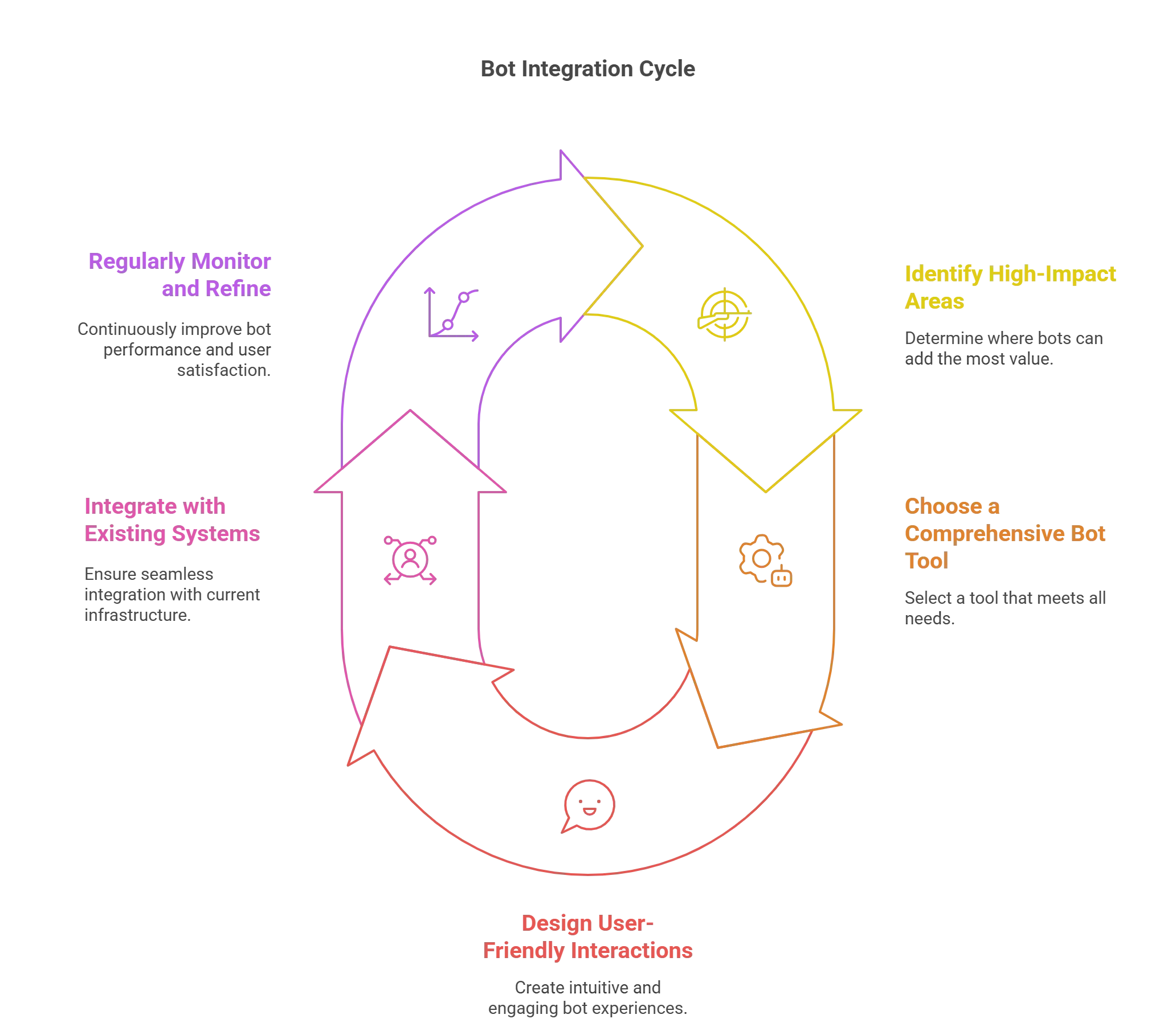
5 Key Practices to Incorporate Bot Integration Effectively
With advantages and concepts clear, here are five practices to maximize effective bot integration:
1. Identify High-Impact Areas
Pinpointing time-consuming or resource-intensive processes is the first step in efficiently integrating conversational AI into your IT operations. With a comprehensive report on what will yield the greatest impact, you can pursue automation more effectively.
This practice helps IT teams significantly improve efficiency, reduce errors, and free up valuable time for strategic initiatives. Here are vital tips to perform this analysis:
Tip 1: Conduct a thorough process mapping exercise to identify bottlenecks and repetitive tasks.
Tip 2: Prioritize tasks based on their frequency, complexity, and impact on overall IT efficiency.
Tip 3: Involve IT staff in the process identification to leverage their expertise.
Tip 4: Consider using process mining tools to visualize and analyze workflows.
2. Choose a Comprehensive Bot Tool
Another mandatory practice is selecting a bot integration tool whose solution aligns with your organization’s specific needs. A well-chosen platform provides the necessary tools and capabilities to build, deploy, and manage bots effectively.
Here are vital tips to consider while choosing your bot integration tool:
Tip 1: Evaluate platforms based on how you plan to scale AI in your business.
Tip 2: Prioritize its natural language processing (NLP) accuracy and integration capabilities.
Tip 3: Ensure the tool can handle and incorporate different types of bots (e.g., chatbots, virtual assistants, automation bots).
Tip 4: Your selection must come with the latest security features for maximum data privacy.
Tip 5: Experiment in test phases to evaluate their performance before going live.
3. Design User-Friendly Interactions
Ensuring user-friendly interfaces is an essential practice that you mustn’t overlook. The bot interface enhances user satisfaction and expedites adoption. Clear and intuitive interactions reduce frustration and increase the likelihood of users utilizing the top chatbot solutions for IT needs.
Here are three tips to keep in mind when implementing your bot:
Tip 1: Ensure your bot conversations are tuned to deliver simple and comprehendible language
Tip 2: Provide conversational AI algorithms with clear prompts and options to learn how to guide users effectively.
Tip 3: Consistently gather feedback from both users and reports from the bot to maintain usability.
4. Integrate with Existing Systems
Seamless integration of bots with existing IT systems ensures data consistency, reduces manual data entry, and improves overall efficiency. This practice also enables bots to access and leverage information from various sources to provide comprehensive and accurate responses.
Here are some tips to factor in for integrating your existing systems with your boot tool:
Tip 1: Develop a comprehensive integration plan outlining data flows and system interactions.
Tip 2: Utilize APIs to connect bots with different systems and applications.
Tip 3: Test integrations thoroughly to identify and resolve any issues.
Tip 4: Use integration platforms to simplify the process.
These practices, coupled with tracking bot utilization and regular knowledge base updation, will help you improve overall bot integration in your business.
5. Regularly Monitor and Refine
Regulatory guidelines constantly evolve to ensure AI tools do not create bias or security concerns. New algorithms and coding approaches are regularly introduced to improve conversational AI’s delivery of better chatbot integration for IT workflows.
Even the best conversational AI platforms must regularly review and adapt their processes to keep up with these changes and stay relevant. Here are three tips to strengthen your monitoring and improvement strategies:
Tip 1: Regularly audit your bot integrations by analyzing user interactions, response accuracy, and adherence to guidelines.
Tip 2: Implement surveys, questionnaires, or direct communication channels to gather user feedback and suggestions.
Tip 3: Develop KPIs and tracking solutions that monitor metrics such as response time, customer satisfaction ratings, and resolution rates in real-time.
Tip 4: Ensure all improvement steps are implemented in sprints and phases for clear and incremental results.
With these five practices in place, businesses can ensure their bot integrations stay robust and relevant.
Secure Bot Solutions for Businesses
A report on ‘2021 Bot Management Trends‘ emphasized issues like site slowdowns, account fraud, credential cracking and brute force attacks, account takeovers, etc., making security leaders skeptical about using advanced bot services.
Every piece of technology comes with cyber-attack hazards. IT leaders must not ignore chatbots’ substantial contribution to businesses. Instead, they should establish a standardized and thorough testing strategy for mitigating bot security risks. End-to-end testing ensures that the chatbot performs as intended across all stages of interaction.
According to Gartner, by 2027, chatbots are expected to become the primary customer service channel for about a quarter of organizations. A survey conducted in early 2022 revealed that 54% of organizations already used some form of chatbot for customer-facing applications.
For IT leaders, the critical question becomes, ” How can we ensure effective and secure chatbot integration?” Thankfully, AI advancements offer solutions integrating a company’s messaging infrastructure with various systems through chatbots and emerging IoT messaging standards.
Using natural language processing and artificial intelligence, this development can meet customer needs and be securely integrated into enterprise messaging systems to drive internal efficiencies.
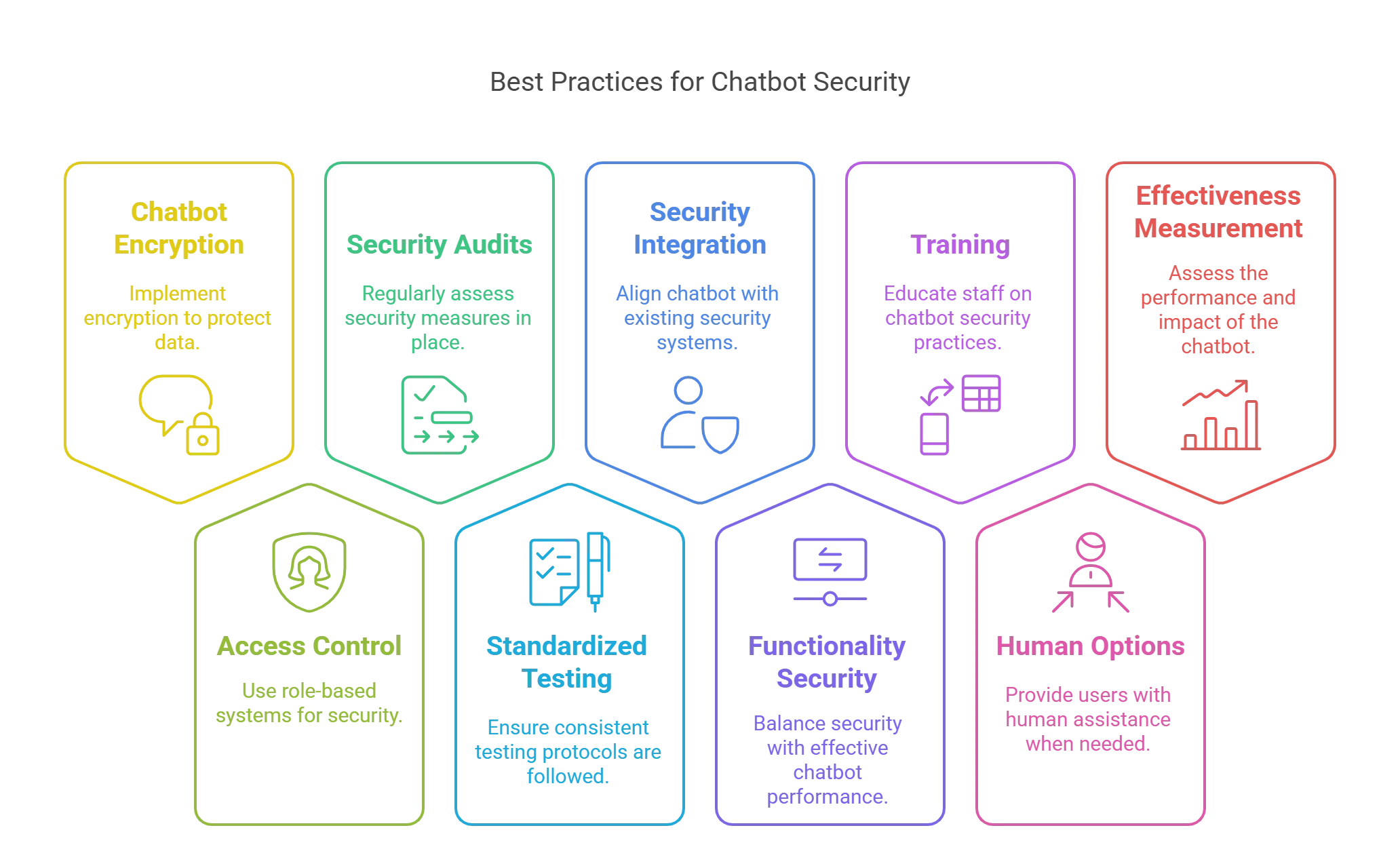
Best Practices for Secure Chatbot Integration
The need for robust security measures, especially for integrating chatbots, cannot be overstated. Chatbots handle sensitive data. IT leaders must conduct a comprehensive security and requirements assessment before integrating secure bot solutions for businesses.
During bot integration, IT leaders must ensure that:
- The AI tools are equipped to handle unpredictable data inputs effectively.
- Secure chatbot integration should involve localization, performance, and security beyond basic functionality.
- IT leaders must effectively incorporate voice or text-based interfaces based on the audience.
- The objective should be to offer a compatible user experience across different digital channels and platforms.
- Chatbots should be effectively programmed to deliver the right message at the right time.
Here are some best practices:
1. Implement Chatbot Encryption
The first step is to ensure that the chatbot’s architecture is designed with security at its core. It should follow end-to-end encryption of messages and implement a role-based security framework.
Encryption should be robust enough to protect sensitive consumer and business information, which malicious actors cannot intercept. Ensure that APIs used to integrate chatbots with other systems are secure. This includes using authentication tokens and API gateways and limiting API access to necessary systems and users only.
2. Use a Role-Based Access Control System
Role-based access control can restrict interaction with the chatbot’s backend systems and sensitive data. Only authorized personnel can handle chatbot-related features and data, which can mitigate the risk of internal threats. IT leaders must implement multi-factor authentication and authorization protocols to verify the credentials of people accessing the chatbot system.
3. Conduct Security Audits
IT leaders must ensure that regular security audits are organized to identify and address potential vulnerabilities in the chatbot’s infrastructure. This includes:
- Review the chatbot’s code
- Check third-party integrations
- Verify communication protocols
4. Standardized Chatbot Testing
Chatbot testing must check for randomness and uncertainty in conversations. Chatbots interact with various cloud services and platforms, making it quite complex to predict every user input. Here are some ways in which IT leaders can ensure secure bot solutions for businesses:
- Initiate manual testing, followed by beta testing with a closed group to gather real-time feedback.
- Refine the chatbot’s data model and improve its responses.
- Use automation for functional testing and test the conversational flow to ensure user engagement.
- Penetration and vulnerability testing to simulate attacks and assess the chatbot’s security posture.
5. Secure Chatbot Integration with Existing Security Infrastructure
Organization leaders must ensure that the chatbot is integrated with the organization’s existing security infrastructure, such as firewalls, intrusion detection systems, and security information and event management systems. Equally significant is ensuring that chatbot security measures complement industry standards and regulatory compliance requirements.
6. Secure Chatbot Integration and Effective Functionality
Successful chatbot programming must anticipate and manage a wide range of scenarios. Chatbots should be capable of addressing unfamiliar or difficult-to-predict scenarios. Developers must design chatbots that can handle incomplete or irrelevant information while ensuring the conversation remains engaging and secure. Chatbot testing is necessary to ensure the following:
- The chatbot effectively introduces itself and explains its capabilities when a conversation starts
- It understands casual conversations and comprehends the user’s questions accurately.
- It offers valid and relevant answers to user queries.
7. Training and Education
It is imperative to train and educate employees about the security risks associated with chatbots and best practices for interacting with them. Training modules must include awareness of phishing attempts, social engineering attacks, and the significance of not sharing sensitive information.
8. Smartly Give Human Options
It is crucial to consider the target audience during the chatbot design phase to ensure that interactions are personalized to their needs. Despite the best efforts in programming, some scenarios will remain unpredictable. In such cases, the chatbot should be equipped to transition to a human representative.
9. Measure Chatbot Effectiveness
IT leaders must track key metrics like:
- User Engagement
- Speed to provide quick and accurate responses
- Functionality
- Interoperability and integration with other systems and platforms
- Scalability to support multiple users and additional modules
IT Security and Chatbots for Businesses and Customers
Chatbots offer a wide range of benefits for both businesses and customers. 72% of business leaders have prioritized AI and chatbots across customer experiences.
- Secure chatbots ensure customers receive prompt and efficient service at all times, leading to a 3% increase in customer satisfaction and a 17% improvement in first resolution time.
- AI chatbots integrated with CRM or marketing tools can offer personalized recommendations and update customers on order statuses.
- Chatbots break down language barriers by offering multilingual support and empowering customers to resolve basic issues on their own.
- By monitoring user activity, chatbots can proactively reach out to customers to address potential issues or provide helpful information.
- Secure chatbots learn from customer interchanges and refine their ability to provide accurate and personalized responses.
- They can be programmed to request feedback after each interaction, handle repetitive tasks, and offer self-service options.
- AI-powered chatbots can detect customer intent and sentiment through natural language processing and automate sales tasks. This can empower businesses to serve more customers without increasing staff.
Building IT Excellence with Bot Integration
IT is a demanding function that will continue to grow with the expanding digital space. Effectively using conversation AI and bot integrations will transform how businesses manage support requests, guide users, and maximize business productivity.
The concepts and tips we’ve elaborated on in this article will make the bot integration process nearly seamless. All that’s left is to select the right partner to devise workforce solutions that meet your business’s unique needs.
That’s where Hurix Digital is the perfect choice. With comprehensive business solutions, from training modules to implementation programs, we can achieve IT excellence through a clear journey.
So get started and schedule a quick discovery session with us today!

Currently serving as the Vice President of Technology Delivery Operations at HurixDigital, a prominent global provider of digital content and technology solutions for publishers, corporations, and educational institutions. With over 16 years of experience spanning EdTech and various domains, I hold certification as a SCRUM Product Owner (CSPO). My expertise includes operations, finance, and adept people management skills.

